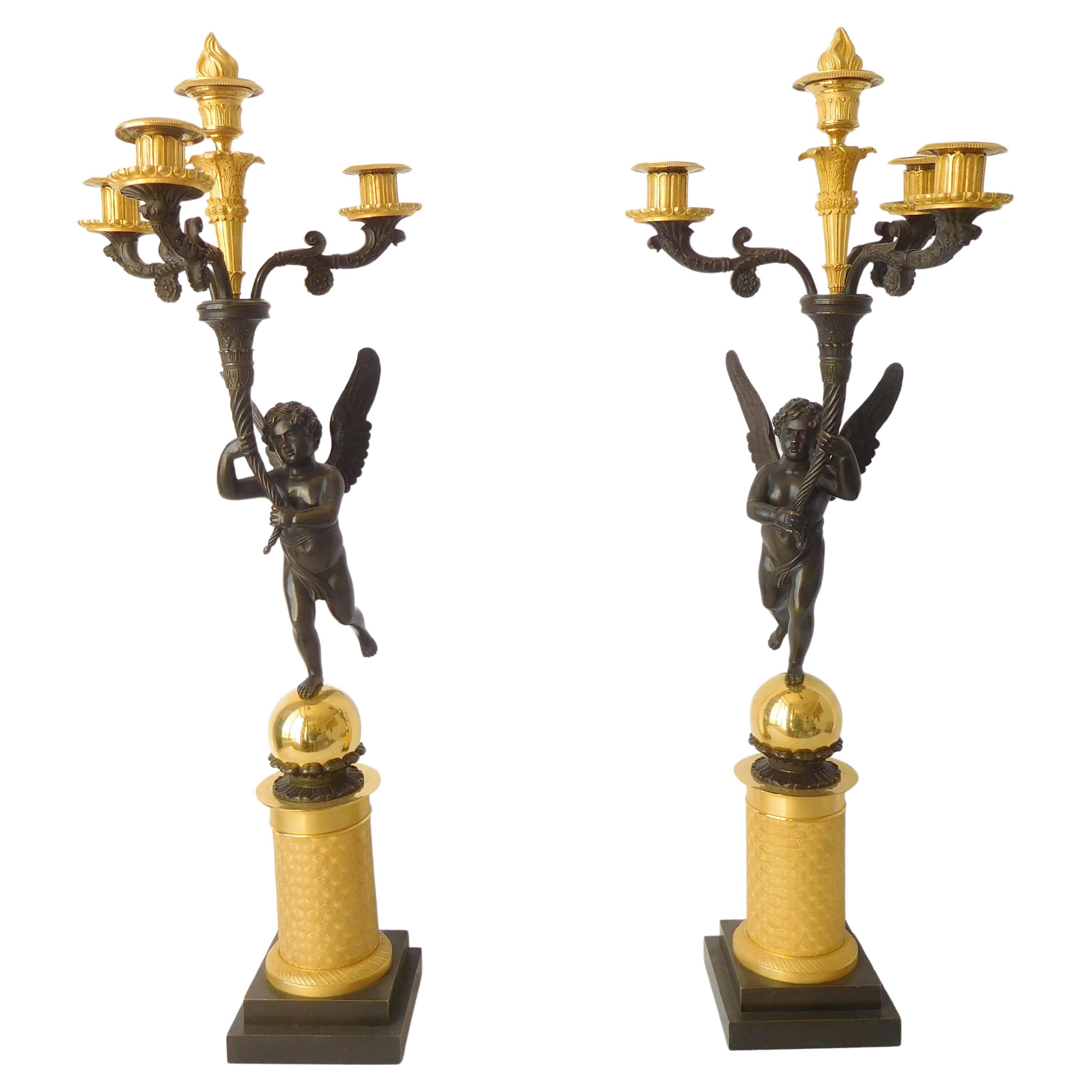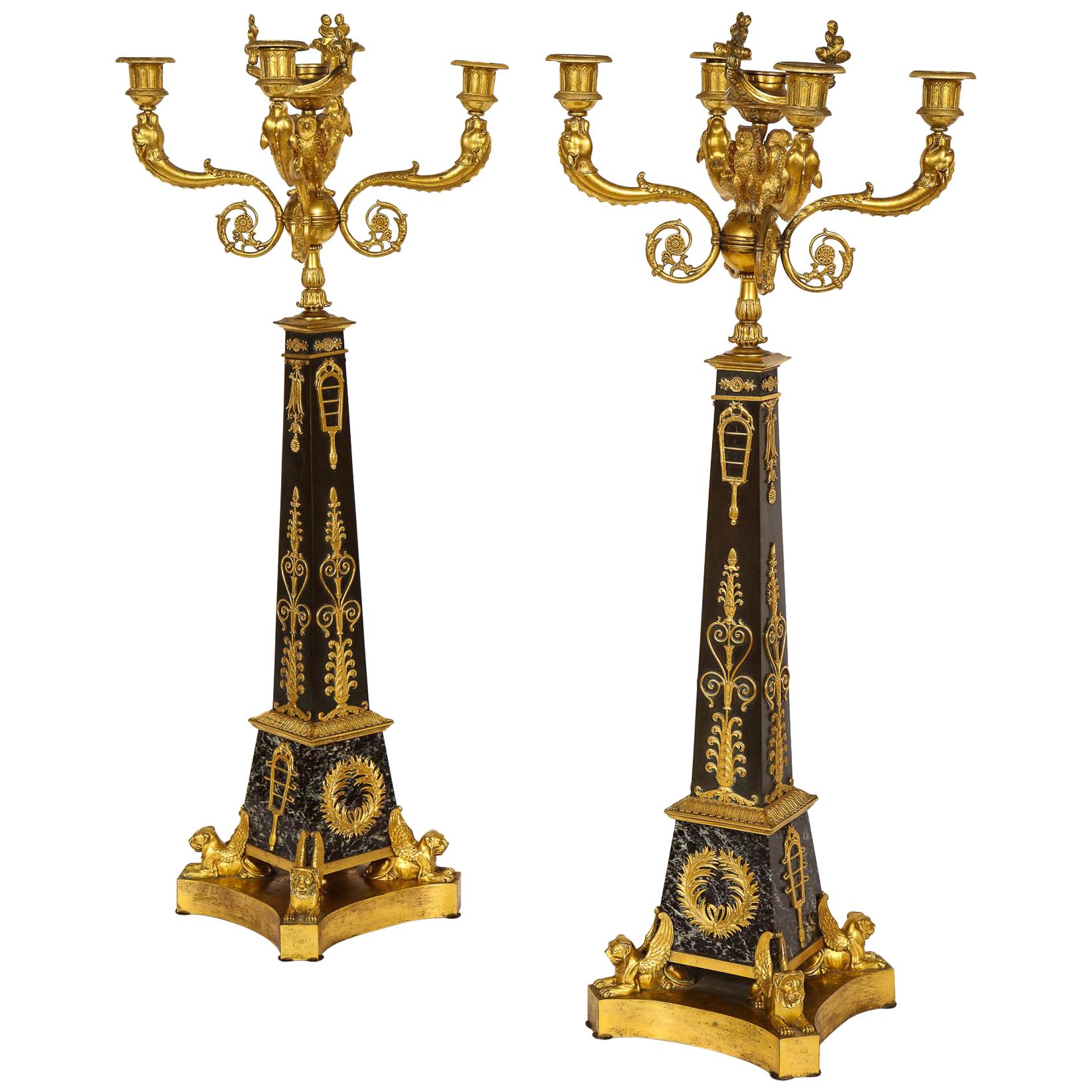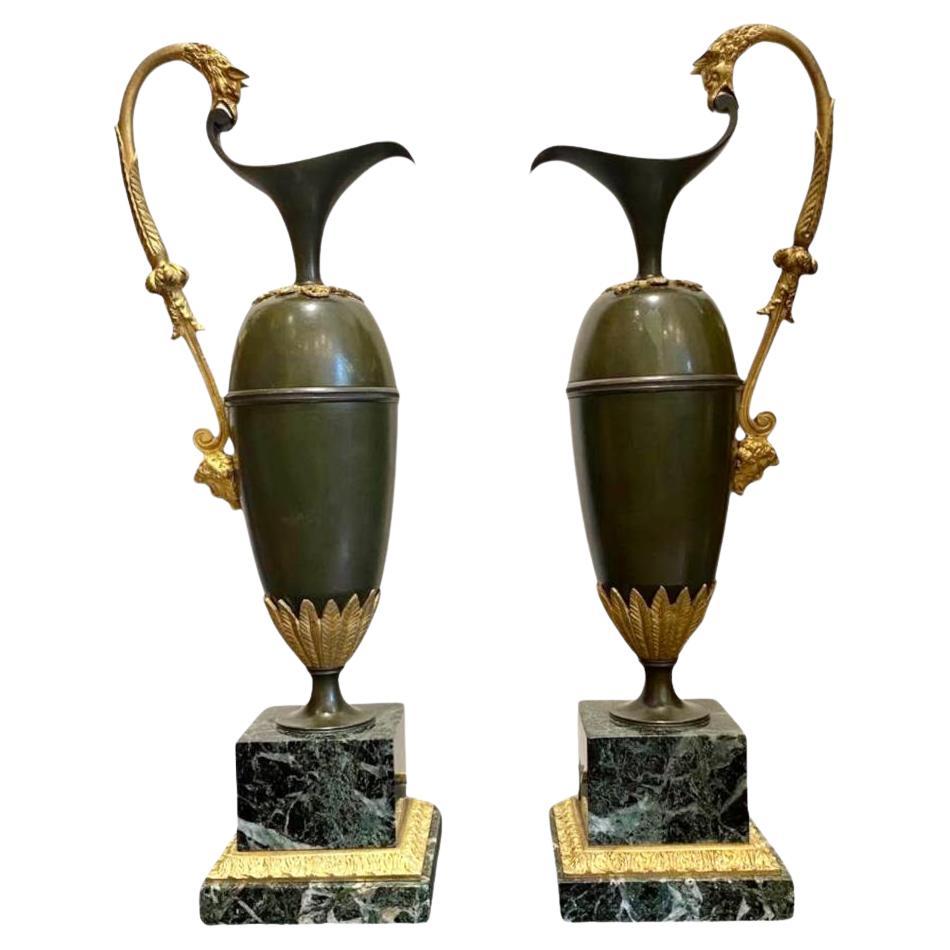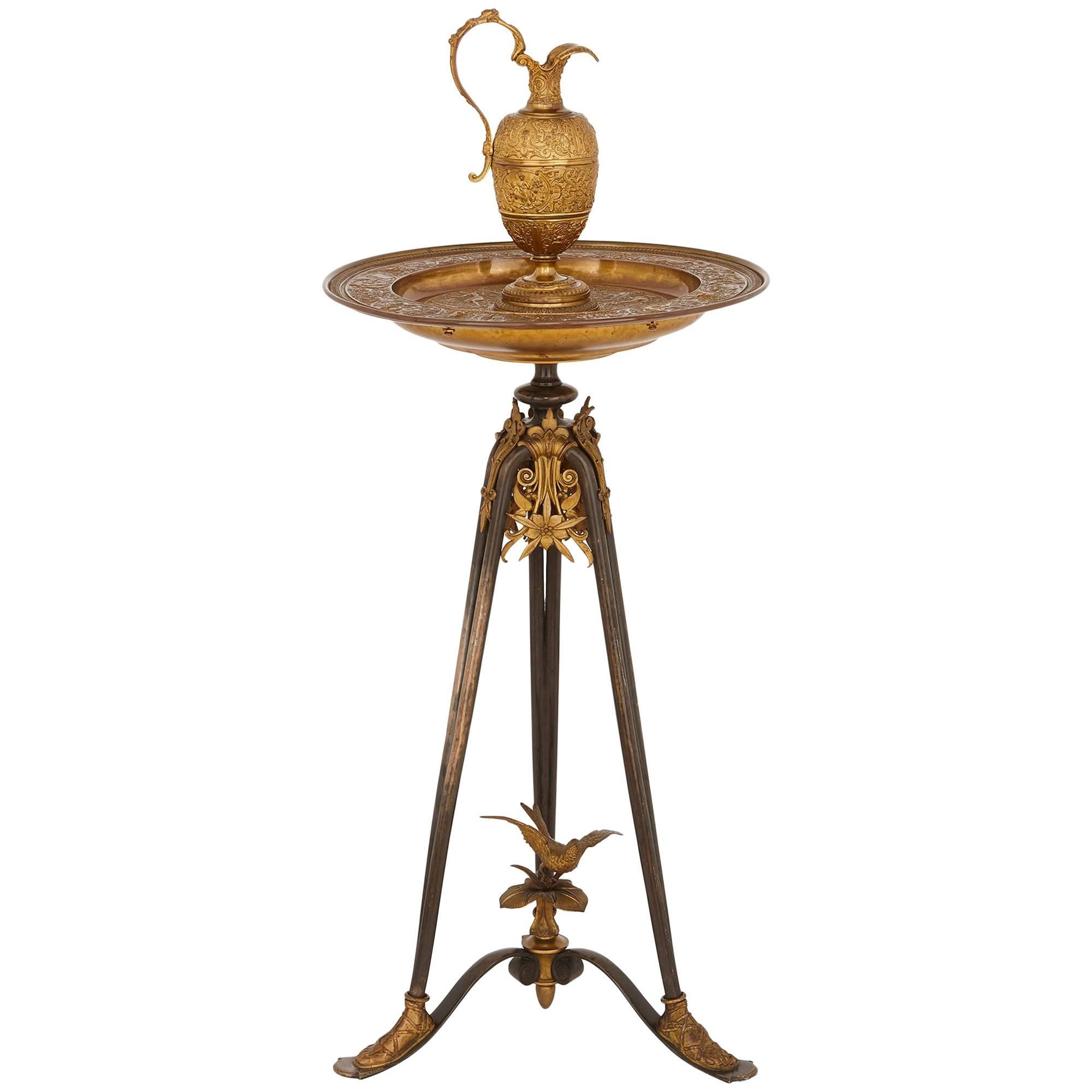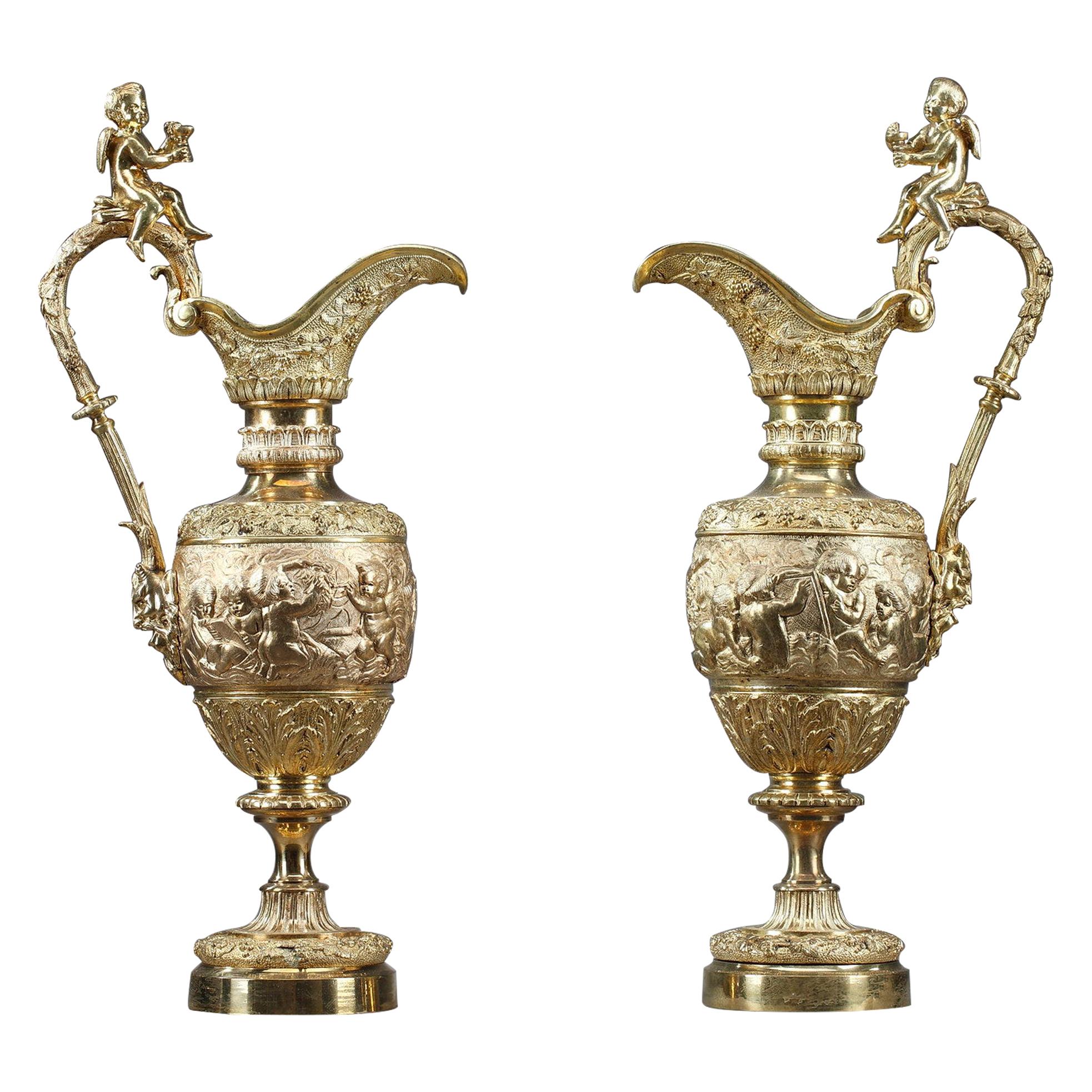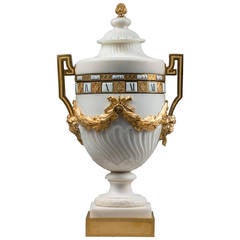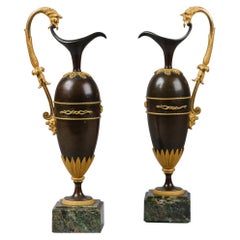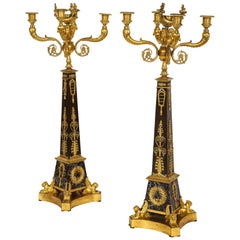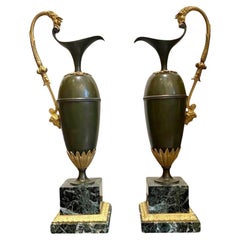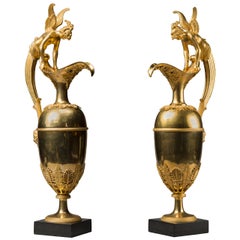
Pair of Empire Gilt Bronze Ewers Attributed to Claude Galle
View Similar Items
Want more images or videos?
Request additional images or videos from the seller
1 of 7
Pair of Empire Gilt Bronze Ewers Attributed to Claude Galle
About the Item
- Attributed to:Claude Galle (Artist)
- Dimensions:Height: 22.45 in (57 cm)Width: 4.14 in (10.5 cm)Depth: 4.14 in (10.5 cm)
- Sold As:Set of 2
- Style:Empire (Of the Period)
- Materials and Techniques:
- Place of Origin:
- Period:
- Date of Manufacture:circa 1810
- Condition:Wear consistent with age and use. Certificate of authenticity. Original gilding. Fully overhauled upon sale.
- Seller Location:Paris, FR
- Reference Number:Seller: O0021stDibs: LU142422662252
About the Seller
No Reviews Yet
Vetted Seller
These experienced sellers undergo a comprehensive evaluation by our team of in-house experts.
1stDibs seller since 2015
More From This SellerView All
- Chased Gilt Bronze Rocaille Louis XV Cartel by Viger, Case Attributed to OsmondBy François VigerLocated in Paris, FRFrançois Viger, reçu maître horloger reçu maître en 1744 Case Attributed to Robert Osmond (1711-1789), reçu maître fondeur en janvier 1746 Im...Category
Antique 1750s French Louis XV Wall Clocks
MaterialsBronze
Price Upon RequestFree Shipping - “Cercles Tournants” Louis XVI Mantel Clock, Bronze Attributed to GouthièreBy Pierre GouthiereLocated in Paris, FRImportant white marble “Cercles Tournants” mantel clock. Gilt bronze mounts attributed to Pierre Gouthière. Paris, Louis XVI period, circa 1775...Category
Antique 1770s French Louis XVI Mantel Clocks
MaterialsMarble, Bronze
Price Upon RequestFree Shipping - Pair of Sèvres Bisque Porcelain Winged Lions Bearing Gilt BasketsBy Alexandre-Évariste Fragonard 1Located in Paris, FRAfter a Model by Alexandre-Evariste Fragonard Rare Pair of Sèvres Bisque Porcelain Winged Lions Bearing Gilt Baskets Sèvres Royal Manufactory, Restoration period, circa 1...Category
Antique 1820s French Restauration Decorative Baskets
MaterialsPorcelain, Sèvres
- Sèvres Porcelain Louis XVI Lyre Mantel Clock by Kinable, Dial by DubuissonBy Dieudonné Kinable, DubuissonLocated in Paris, FRDieudonné Kinable Enamel Dial Attributed to Dubuisson (1731-1815) Exceptional Porcelain Lyre Mantel Clock from the Royal Sèvres Porcelain Manufactory Paris, late Louis XVI period, circa 1785-1790 Height 62 cm; width 26 cm; depth 16 cm The round enamel dial, signed “Kinable”, indicates the hours in Roman numerals, the fifteen-minute intervals in Arabic numerals, the annual calendar and the signs of the Zodiac, by means of four hands, two of which are made of pierced gilt bronze, the two others in blued steel. The magnificent lyre-shaped case is made of “bleu nouveau” Sèvres porcelain and finely chased and gilt bronze. The bezel is made up of a gilt bronze twisted rope; the pendulum is adorned with brilliant-cut paste stones; the body of the lyre is adorned with gilt bronze beading and with laurel leaf and seed motifs, with two rosettes issuing floral and foliate swags. The clock is surmounted by a mask with radiating sunrays. The spreading foot is decorated with beading and twisted rope motifs and a leafy garland. The en-suite decorated oval base is raised upon four flattened ball feet. The Royal Sèvres Porcelain Factory produced the lyre clock model as of 1785. Four colours were offered: turquoise, green, pink and bleu nouveau. These exceptional clocks were made for the connoisseurs of the time. Louis XVI had a similar clock in his Salon des jeux in Versailles; its dial bore the signature of the clockmaker Courieult (this is almost certainly the example illustrated in P. Verlet, Les bronzes dorés français du XVIIIe siècle, Paris, 1999, p. 41). Kinable, however, was the clockmaker who purchased the greatest number of lyre cases from the factory, and he developed the model in the late 18th century. Among the porcelain lyre clocks signed by this brilliant horologer, one example is in the Victoria & Albert Museum in London (illustrated in H. Ottomeyer and P. Pröschel, Vergoldete Bronzen, Band I, Munich, 1986, p. 252, fig. 4.6.26). A second such clock is in the Royal British Collection (see C. Jagger, Royal Clocks, The British Monarchy & its Timekeepers 1300-1900, 1983, p. 130, fig. 176). Bibliography: M. Gay and A. Lemaire, “Les pendules lyre”, in Bulletin de l’Association nationale des Collectionneurs et Amateurs d’Horlogerie ancienne, Winter 1993, n° 68, p. 5-40. Dieudonné Kinable (active circa 1785-1810) One of the most important Parisian clockmakers of the late 18th century. His shop was located at n° 131 Palais Royal. He purchased a great number of lyre-type porcelain clock cases...Category
Antique 1780s French Louis XVI Mantel Clocks
MaterialsBronze
Price Upon RequestFree Shipping
You May Also Like
- Pair of Empire Bronze Ewers in The Manner of Claude GalleBy Claude GalleLocated in Brighton, West SussexA fine pair of empire gilt and patinated bronze ewers in the manner of Claude Galle. French, Circa 1820.Category
Antique 19th Century French Empire Vases
MaterialsBronze
- Large Pair of French Empire Period Candelabra, Attributed to Claude GalleBy Claude GalleLocated in New York, NYA magnificent large pair of five-light doré bronze and patinated bronze Empire period candelabra, attributed to Claude Galle made in the early 1800s. This pair of candelabra are set ...Category
Antique 1810s French Empire Candelabras
MaterialsMarble, Bronze
- Pair Of Green Patina And Gilt Bronze Ewers, First Empire, Attributed To RavrioBy André-Antoine RavrioLocated in NICE, FRPair of 1st Empire aiguieres by sculptor Ravrio ( 1759 - 1814 ) in green patinated bronze and gilded bronze, the base is in sea-green marble. Of elongated baluster form, the necks a...Category
Antique Early 19th Century Empire Garniture
MaterialsMarble, Bronze
- Empire Gilt Bronze Vase Clock Circa 1810 Attributed to Claude GalleLocated in Warsaw, PL"Empire gilt bronze vase clock circa 1810 Attributed To Claude Galle" Beautiful bronze vase pendulum with original mercury gold gilding, splendid carving details. Paris movement wit...Category
Antique Early 19th Century French Empire Mantel Clocks
MaterialsBronze
- French Gilt Empire Claude Galle Clock By Claude Gallé, 19th CenturyBy Claude GalleLocated in Lisbon, PTRare and beautiful gilt bronze clock with rotating dial made for the 1807 Exhibition after a composition by Claude Gallé,regarded as one of the best bronziers of the late Louis XVI a...Category
Antique 19th Century French Empire Mantel Clocks
MaterialsMarble, Metal, Bronze, Enamel, Ormolu
- Pair of Gilt Bronze Empire Period 'Dolphin' Centrepieces attributed to ThomireBy Thomire & Cie.Located in London, GBA Pair of Late Empire Ormolu Centrepieces "aux dauphins" Each constructed from gilt bronze, with burnished highlights, the oval plinth bases supported on lion paw feet and with ornaments derived from Pergolesi, two addorsed mythical dolphins supporting a pierced foliate basket with accompanying cut-glass dish. French, circa 1815 An important suite of four centrepieces signed "Thomire à Paris...Category
Antique 19th Century French Empire Garniture
MaterialsOrmolu
